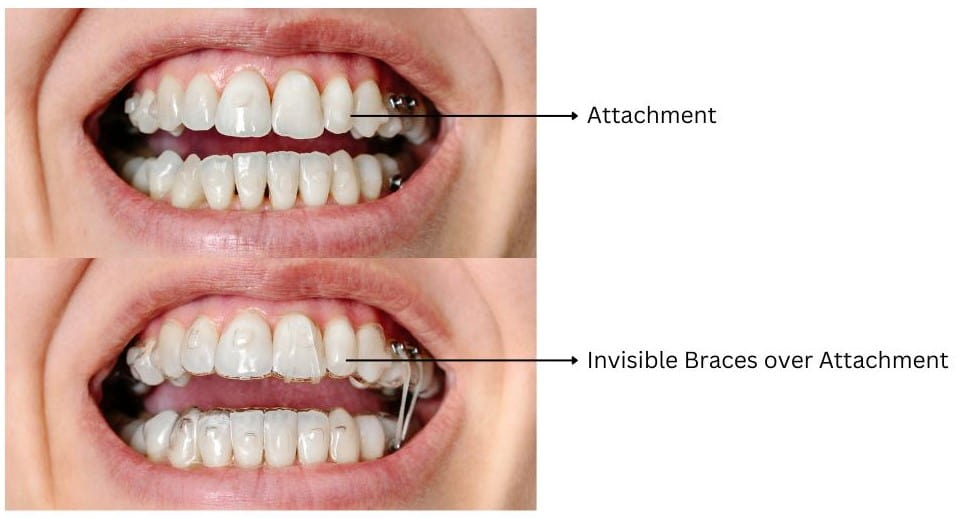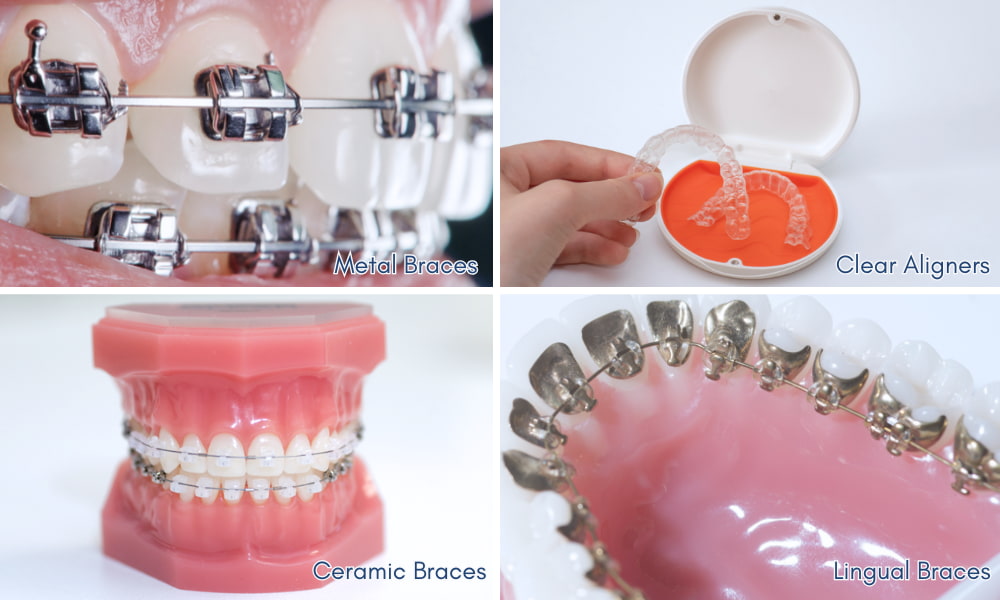TEETH - STRAIGHTENING TREATMENT
SERVICES
RESOURCES
SHOP
MEDICAL CERTIFICATIONS
Certifications ensuring safety, quality, and compliance with global standards.
Certifications ensuring safety, quality, and compliance with global standards.
Many people believe that orthodontic treatment always takes a long time, often a year or more. This assumption usually stems from the traditional image of metal braces, which are seen as uncomfortable and time-consuming. However, the reality is that treatment duration can vary widely depending on the type of braces used. In this article, we’ll break down how long each type of braces typically takes, helping you understand your options more clearly.

Conventional braces, including metal, ceramic, and lingual types, function in a similar manner, and their treatment duration is typically comparable. Further details on their respective timelines will be explored below.
If you’re curious about the mechanism behind how conventional braces straighten teeth, the answer is straightforward. They work by exerting continuous pressure on the teeth. The primary components of metal braces include brackets, archwires, and sometimes, rubber bands or ties.
The brackets and wires play a pivotal role in aligning your teeth. Rubber bands or ties are often used with braces to apply additional pressure in specific directions. This is especially useful for correcting bite issues like overbites or underbites. For more detailed information, learn about how each braces work.
While some individuals may experience results in as little as six months, this timeframe doesn’t necessarily correspond to the entire treatment duration. Immediate results should not be anticipated with braces; rather, it takes time for them to effectively straighten teeth.
The treatment time will depend on your teeth. Generally, you will need to wear them for 1 to 3 years. For a more accurate time, it’s always best to consult with your dentist. They will be able to provide you with detailed information regarding your teeth condition and the estimated time to finish your treatment.

Invisible aligners differ from traditional metal braces in that they are clear in appearance. Additionally, the duration of their treatment and operating mechanism vary from that of conventional braces. This innovative treatment represents a significant shift in addressing teeth alignment issues. Let’s explore more about this below.

Attachments are used with invisible braces to help straighten teeth. During treatment, the patient’s teeth are attached to these attachments, which are little buttons made of dental composite material. They serve an important role in aiding tooth movement to attain the ideal alignment.
Wearing invisible braces typically shows noticeable changes in teeth alignment within 4 to 6 weeks, but the full treatment duration varies based on individual cases. The average treatment of invisible braces is 6 to 9 months. The treatment period is highly dependent on your teeth. Just as it is customised to you, so is the period. Thus, consistent wear and adherence to the orthodontist’s instructions are essential for optimal results.
In this article, we’ve outlined the treatment duration for the different types of braces. Conventional braces (metal, ceramic, and lingual) usually take 1 to 3 years, while invisible braces (clear aligners) show noticeable changes in 4 to 6 weeks, completing in 6 to 9 months. Whether opting for conventional or invisible braces, individualised treatment is key, with timelines personalised to specific types of cases.
Consultation with your orthodontist offers tailored advice, guiding you on the path to a confident, well-aligned smile. Looking to enhance your smile? Reach out for a complimentary consultation and discover the first steps towards your new smile.
Get a free consultation with your orthodontist today to explore your options and take the first step towards achieving the smile of your dreams. Your journey to a confident smile starts now!
As we celebrate 5 years of transforming smiles, we’re saying thank you in the best way we know how—with gifts! ...
3 July 2025
Getting braces is a major step toward achieving a straighter, healthier smile—but if your orthodontist says you might need to ...
8 May 2025
Bad breath (halitosis) is a common but frustrating condition that can affect confidence and social interactions. In many cases, brushing ...
7 May 2025
An overbite is a common dental condition where the upper front teeth overlap the lower front teeth. While a slight ...
7 March 2025
Recovering from a tooth extraction is easier with proper post-teeth removal care. Mild swelling, bleeding, and discomfort are normal but ...
27 February 2025

